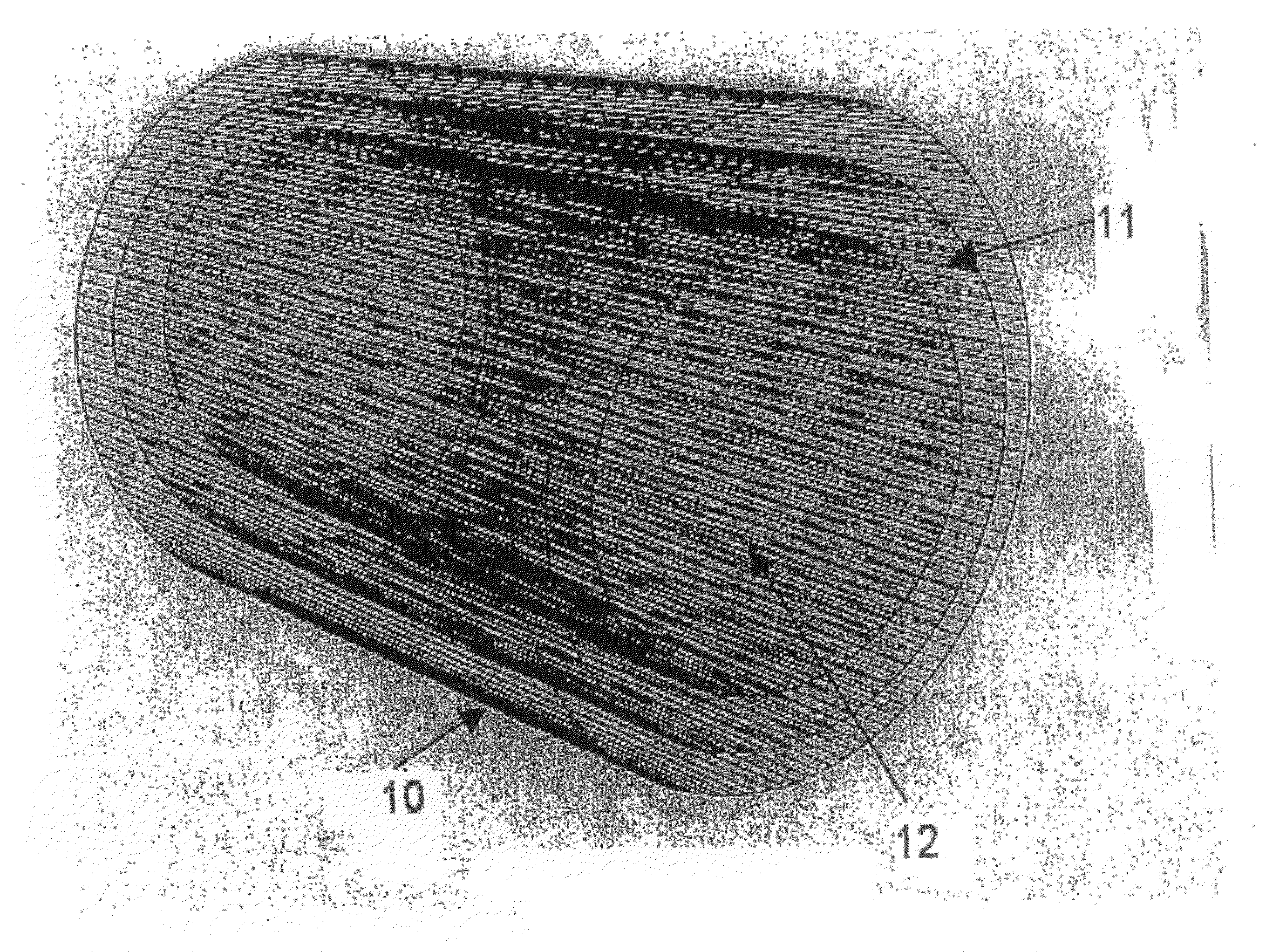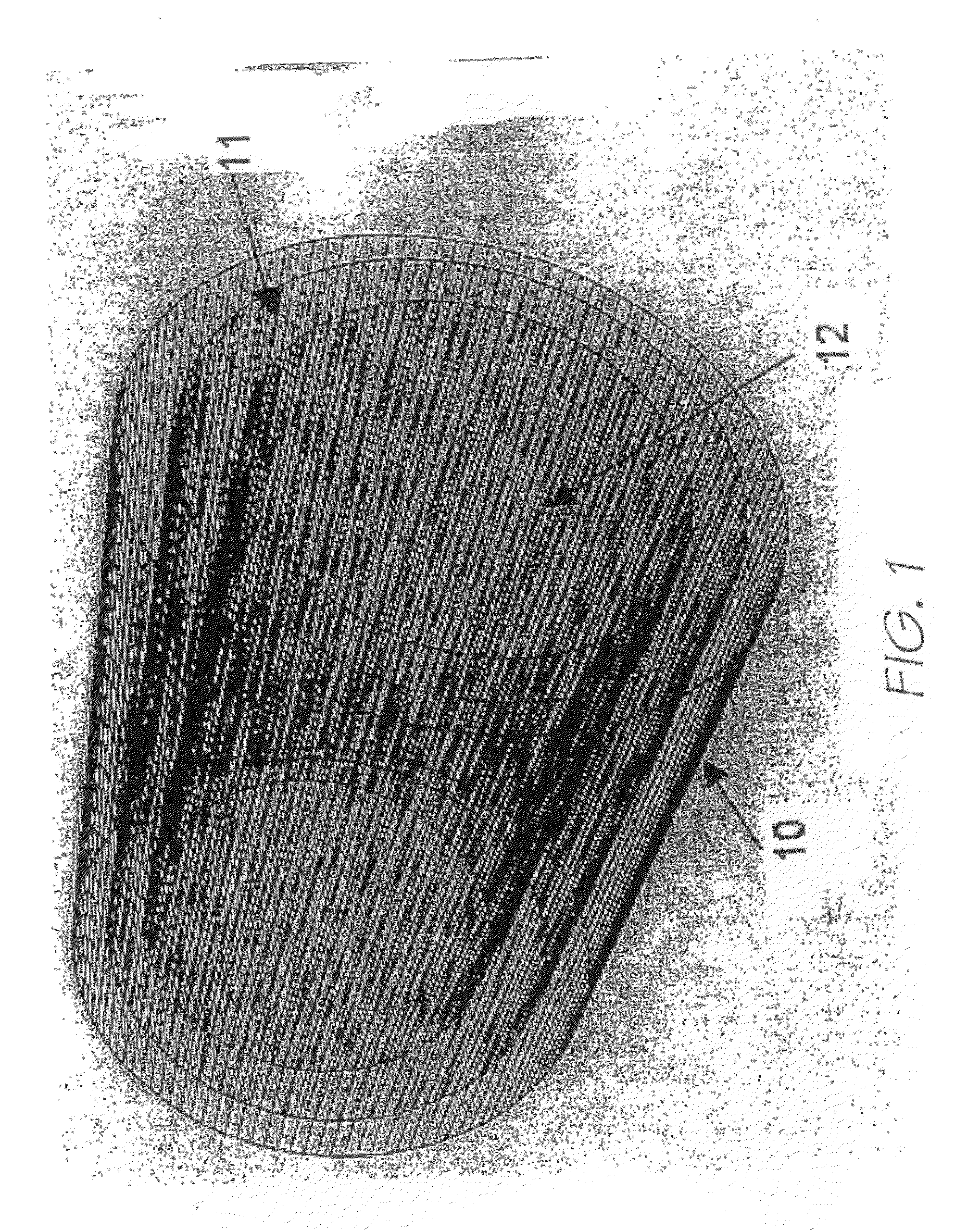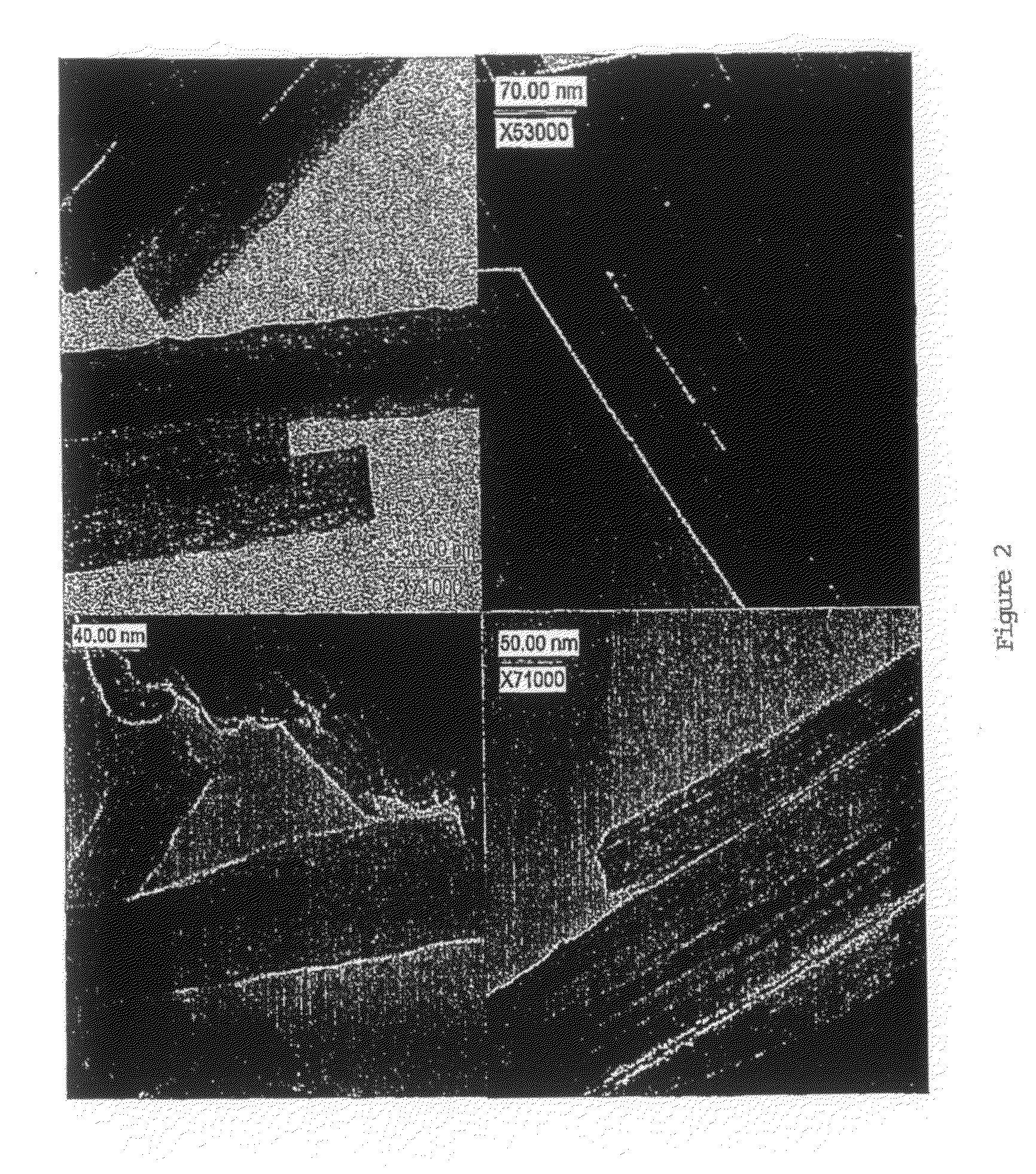Modified inorganinc materials
a technology of inorganic materials and modified materials, applied in the field of modified inorganic materials, can solve the problems of large-scale delivery of agrochemicals with great inefficiencies and limited development at the lower expense end, and achieve the effect of safe handling and storag
- Summary
- Abstract
- Description
- Claims
- Application Information
AI Technical Summary
Benefits of technology
Problems solved by technology
Method used
Image
Examples
example 1
[0057]Halloysite was obtained from a test site in Camel Lake, South Australia and from New Zealand China Clay Ltd of grade G. The characteristics of these halloysites were determined and are as shown in Table 1:
TypeHalloysite G (HG)Camel Lake (Cla1)Length (μm)0.50.85External Diameter (nm)3060Internal Diameter (nm)2324.5Calculated Aspect Ratio6.00 × 10 − 27.06 × 10 − 2Specific Surface Area (m2 / g)65.125.3Lumen Volume (cm3 / g)0.160.075
example 2
Clay Conditioning
[0058]Three methods were used to modify (condition) the clays of Example 1, in this case, the halloysite tubes:
[0059](a) Surfactant Modification:[0060]Halloysite (5.0 g) was refluxed (30 min, 80° C.) with water (500 ml). HDTMA (8 ml, HDTMA aqueous solution 25% grade in H2O, Fluka) was added and the suspension refluxed (1 hr, 80° C.), then allowed to cool overnight with stirring. The suspension was filtered and washed with water until the counter ion was not detected in the filtrate by one drop of AgNO3 (0.1 M. The ratio (w / w) of clay to HDTMA was also varied to control the extent of modification. The ratios used were 1:1, 2:3, 1:5, 1.10 and 1:20.
[0061](b) Alcohol Modification:[0062]Halloysite (dried and ground) was placed into a vacuum tube and covered with 1-octanol. The mixture was sired and heated to 194° C. using microwave irradiation. A vacuum was applied to the mixture until the appearance of “fizzing” stopped (i.e. the air trapped in the tubes had escaped). A...
example 3
Loading of Conditioned Clay
[0066]For actives of low melting point, the “melt method” of loading was used. For actives of high melting point, the “solution method” was used.
Melt Method:
[0067]Dried modified clay was ground in a 1:1 (w / w) ratio with the active to be loaded. The mix was heated to above the melting point of the active for 5 hours. The active entered the lumen 12 via capillary action.
Solution Method:
[0068]A solvent was selected in which the active was highly soluble. For example, to load the compound benzophenone, acetone was used. A saturated solution of active was mixed with dried, ground modified clay by stirring, followed by exposure to an ultrasonic bath (20 min). The mix was placed in a Schlenk tube and subjected to three vacuum cycles, and was then centrifuged. After removal of supernatant solution, the loaded clay was dried at 90° C. for 24 hours.
[0069]The modes of delivery of loaded modified tubes differed between applications. This example also outlined a method...
PUM
| Property | Measurement | Unit |
|---|---|---|
| Temperature | aaaaa | aaaaa |
| Temperature | aaaaa | aaaaa |
| Temperature | aaaaa | aaaaa |
Abstract
Description
Claims
Application Information
 Login to View More
Login to View More - R&D
- Intellectual Property
- Life Sciences
- Materials
- Tech Scout
- Unparalleled Data Quality
- Higher Quality Content
- 60% Fewer Hallucinations
Browse by: Latest US Patents, China's latest patents, Technical Efficacy Thesaurus, Application Domain, Technology Topic, Popular Technical Reports.
© 2025 PatSnap. All rights reserved.Legal|Privacy policy|Modern Slavery Act Transparency Statement|Sitemap|About US| Contact US: help@patsnap.com



